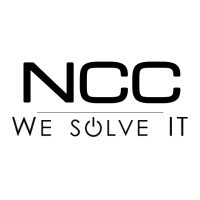Irving IT Support Services Provider Explains Helpdesk vs. IT Support
Most businesses use the terms “help desk” and “IT support” without understanding the difference. This can lead to poor decisions, wasted spending, and service gaps. You need to know exactly what each function covers before choosing a support model that suits your needs.
According to a report from Unisys Corp, nearly half (49%) of employees lose between one and five hours of productivity each week due to IT issues.
As Daren Boozer, CEO, NCC Data - Leading IT Support Services Provider in Irving, says, “Your IT model should do more than solve tickets. It should solve problems before users report them.”
This blog breaks down the real difference between help desk vs IT support, where they overlap, and how to choose the right mix for your business.
Irving IT Support Provider Highlights What is a Help Desk and What Does it Do?
The help desk is your first line of IT support. It’s reactive, fast-paced, and user-facing.
Help desk teams handle common requests like:
- Password resets
- Application access issues
- Basic device troubleshooting
- Printing and connectivity problems
You’ll typically interact with the help desk through ticketing systems or live chat. Help desk agents follow scripts or knowledge base articles to solve known problems quickly.
Help desks are beneficial for enhancing the user experience. They resolve high volumes of repetitive issues that would otherwise slow down your operations. This function reduces the strain on internal teams for small and midsize businesses.
But keep in mind that the help desk doesn’t fix infrastructure. It doesn’t handle security risks or network failures. That’s where IT support comes in.
What is IT Support and What Does it Cover?
IT support covers your entire technical environment, including what the help desk does and much more. It includes the systems you depend on every day.
Here’s what full-service IT support usually manages:
- Server performance and maintenance
- Endpoint monitoring and updates
- Network security and firewall management
- Patch management
- System-wide troubleshooting
IT support takes a proactive role in preventing problems. The goal isn’t just to react to issues, but to stop them from happening in the first place.
This type of support often includes a long-term IT strategy. It helps you scale, improve uptime, secure systems, and meet compliance needs. While the help desk works at the user level, IT support ensures the health of your infrastructure.
Help Desk vs IT Support: Key Differences That Impact Your Business
Many companies don’t know whether they need one or both. The difference between help desk vs IT support lies in scope, skill, and strategy.
Here’s how they compare:
| Category | Help Desk | IT Support |
| Scope of Services | User-level support | Network, infrastructure, and endpoint management |
| Level of Expertise | Entry to mid-level | Mid to senior-level technical professionals |
| Types of Issues Handled | Passwords, printing, software access | Server crashes, cybersecurity, and system architecture |
| Response Times and SLAs | Immediate for simple issues | Timed based on issue complexity and criticality |
| Strategic Value | Keeps users working | Aligns IT with business goals and risk tolerance |
If you only invest in one side of this table, your business could be exposed to downtime and risk.
Helpdesk vs Service Desk: Are They the Same Thing?
No, they are not the same thing.
Helpdesk vs service desk is another source of confusion. Both provide support, but the service desk is aligned with ITIL (IT Infrastructure Library) standards. It covers a broader set of functions:
- Change management
- Asset tracking
- Configuration management
- Release processes
A help desk only manages end-user support tickets. A service desk, by contrast, covers support within an entire IT service management (ITSM) framework.
If your business needs more than just user-level support, a service desk model may be required. This ties directly to how you design your IT environment, especially when compliance, risk, and documentation are involved.
When to Choose Help Desk Services
A standalone help desk is a good fit if your IT needs are basic.
- You run a small business or a startup with fewer than 50 employees
- Your staff regularly deals with routine tech issues
- Your systems are mostly cloud-based and don’t require on-site maintenance
A help desk gives you fast, cost-effective user support. It reduces tickets for internal IT teams and helps small businesses stay efficient.
It’s also helpful when used with an in-house IT manager. The help desk handles the tickets. Your IT manager focuses on operations and vendor coordination. This layered model offers flexibility without overspending.
When to Choose Full-Service IT Support

Full-service IT support makes sense when you’re managing critical systems.
Choose this model if:
- You run a growing business with hybrid systems
- You manage sensitive customer data or financial systems
- You have to comply with HIPAA, PCI-DSS, or NIST standards
- You need long-term planning and risk management
This model gives you access to senior IT experts, engineers, and strategic advisors. It covers cloud infrastructure, cybersecurity, vendor management, and continuity planning.
Without disaster recovery, 93% of companies that experience a major data disaster shut down within a year. IT support helps prevent incidents before they affect your business. More importantly, it enables you to scale IT as your business grows.
Can You Have Both Help Desk and IT Support
Yes. Most businesses do.
The help desk vs IT support conversation isn’t always about choosing one or the other. They often work together.
- The help desk acts as the first point of contact
- Complex issues get escalated to the IT support team
- Escalation rules and documentation keep processes clear
This combined model enables you to handle large ticket volumes while maintaining strategic oversight of your IT operations.
For example, if your company has 150 employees, your help desk can handle password resets while your IT support team upgrades network architecture.
This division of labor reduces bottlenecks and helps you maintain uptime.
How to Choose the Right Model for Your Company
Start with what’s holding you back. Are your users constantly submitting the same tickets time and again? Small businesses lose an average of $427 per minute during IT outages. Do you lose hours troubleshooting network issues?
Then consider:
- Business Size: More users mean more support layers.
- IT Complexity: The more devices, apps, and systems, the higher the need for full-service support.
- Compliance Needs: Regulatory requirements demand documentation and risk controls.
- Downtime Impact: How much does one hour of downtime cost you?
You should also evaluate your internal capacity. If your IT staff is overwhelmed, you may need to outsource one or both layers.
Choosing layered support lets you stay nimble without sacrificing control.
Key Questions to Ask Before Choosing an IT Support Model
Before deciding on your support structure, ask yourself these:
| Question | Why It Matters |
| Do we need 24/7 support? | Helps determine staffing and SLAs |
| Are most issues user-level or system-wide? | Indicates if the help desk alone is enough |
| Do we need help managing IT vendors? | May require senior-level IT support |
| Do we have compliance reporting needs? | You may need service desk capabilities |
| Can our in-house team handle all current tickets? | Outsourcing may be necessary for capacity |
This framework helps you identify gaps and build the right solution for your team.
Leverage the Benefits of Remote IT Support in Irving with NCC Data
You don’t have to pick between help desk and IT support. The right partner helps you build a comprehensive support model tailored to your real needs.
At NCC Data, trusted IT support services firm in Irving, we offer both help desk services and full-scale IT support. Our clients benefit from:
- Documented SLAs and ticket resolution benchmarks
- Proactive monitoring of devices, apps, and endpoints
- Escalation paths with clear communication
90% of IT issues are automated and resolved within 20-30 minutes, so your team gets back to work fast.




